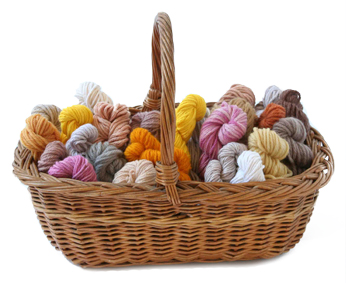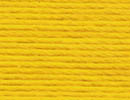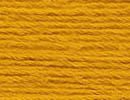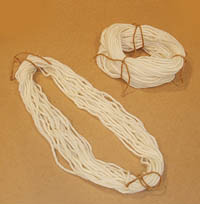Sister and brother duo, Elizabeth and Robby Miracle, first created this dyeing series for a Lion Brand newsletter several years ago. Although that newsletter is no longer around, we loved the idea of making kitchen-safe dyes so much, that we’ve updated it and reprinted the series here.

Creating your own dyes can be a fun and exciting way to personalize projects. This month, we show you how to make all-natural dyes and use them with different cotton and wool yarns.
We used only edible items purchased at our local market, boiling water (and in some cases, salt or vinegar) to make beautiful, all-natural dyes.
After trying our dyes, you will probably want to experiment with other natural food dyes of your own. Start by using fruits or vegetables that stain and experiment! You can mix dye baths to make different colors. You will probably find, as we did, that the colors are all — surprise — “earth” tones!
Because this project requires boiling water, adult supervision is required.
Turmeric Dye
This quantity of dye will easily color 2 skeins of LB Collection Pure Wool or , 2 skeins of Nature’s Choice Organic Cotton. Other options include: Alpine Wool, Fishermen’s Wool, LB Collection Organic Wool, LB Collection Superwash Merino, Martha Stewart Crafts™ Merino, Martha Stewart Crafts™ Roving Wool, Martha Stewart Crafts™ Cotton Hemp, Kitchen Cotton. Click here to see all Lion Brand yarns.
 |
 |
| Dyed Cotton |
Dyed Wool |
Ingredients:
1 oz ground turmeric
3 quarts water
Bring mixture to a boil in a stainless steel or enamel pot and simmer for 30 minutes, stirring occasionally. It will reduce in volume some what while boiling. As soon as it is finished cooking, you can use it.
- Bundle the yarn for dying into a hank. It needs to be looped in such a way that the dye will be able to circulate freely but also needs to be secured so it does not tangle. If you do not do this, you’ll spend a lot of time untangling it when it is wet. Bundling turned out to be particularly important for wool yarn, which will felt together if allowed to move during dying. Here is how we made the bundles:
- Wind the yarn into large loop. You can do this on a swift or by wrapping it around the back of a chair or by wrapping it around your forearm from your fingers, under your elbow and back up again.
- Secure the wound yarn by tying it loosely in two places with short pieces of yarn.
- If your pan is small, double the loop, twisting it into a smaller circle and securing it with two more short pieces of yarn.

- Bring the bath to a boil;
- Dampen the yarn by dipping it in water and wringing it out well. This will help the dye spread smoothly through the yarn.
- Place the yarn in the dye bath.
- Cook for 30 minutes. If the dye bath evaporates to a point where the yarn is not covered with dye, add more water.
- If you want to test your color, remove the yarn from the bath and rinse it. If you like the color, great, if not, put it back for more processing time.
- When the yarn is finished simmering, remove it from the bath and rinse it in cool water until the water runs clear. Do NOT throw out the dye bath until the yarn has dried completely and you know you are happy with the color. Note: When rinsing the yarn, use soap as well as water. It is better to find out that your yarn is not color-fast now than later when you’ve made it into something.
- Wring out the yarn.
- Cut the second set of ties on the yarn, but leave the first ones in so that the yarn is in a big loop.
- If you are dying wool yarn, put it back on the swift or chair or whatever you used when winding it originally, rewind it into a ball and then rewind it back into its loop. This is because some of the strands may have felted together slightly. The winding process will unfelt anything that felted and we found it much easier to pull apart the yarn when it was damp.
- In all cases, hang the yarn up to dry.
—
 About Turmeric:
About Turmeric:
Turmeric is a ‘hot’ spice that is used in Southwestern dishes like chile verde (green chili) and in East Indian dishes like curry. You’ll find it in the spice section of your grocery.
If you are doing a lot of dying with turmeric, you will find it is much cheaper to buy at a grocery that sells to people who are preparing East Indian cuisine




 About Turmeric:
About Turmeric:
Make-Me-Proud
Good idea! I love that you can make SAFE dyes for your yarn!! Wonderful article.
Thanks LionBrand!
Emily Boyd
Thank you so much for this! Since tumeric is a spice, can I use the pot for cooking food after I dye yarn or should I keep the pot for yarn dying only?
Aether
Yup, you can use the pot for food after you wash it!
Rebecca Odonye
Lafia, Nasarawa state Nigeria